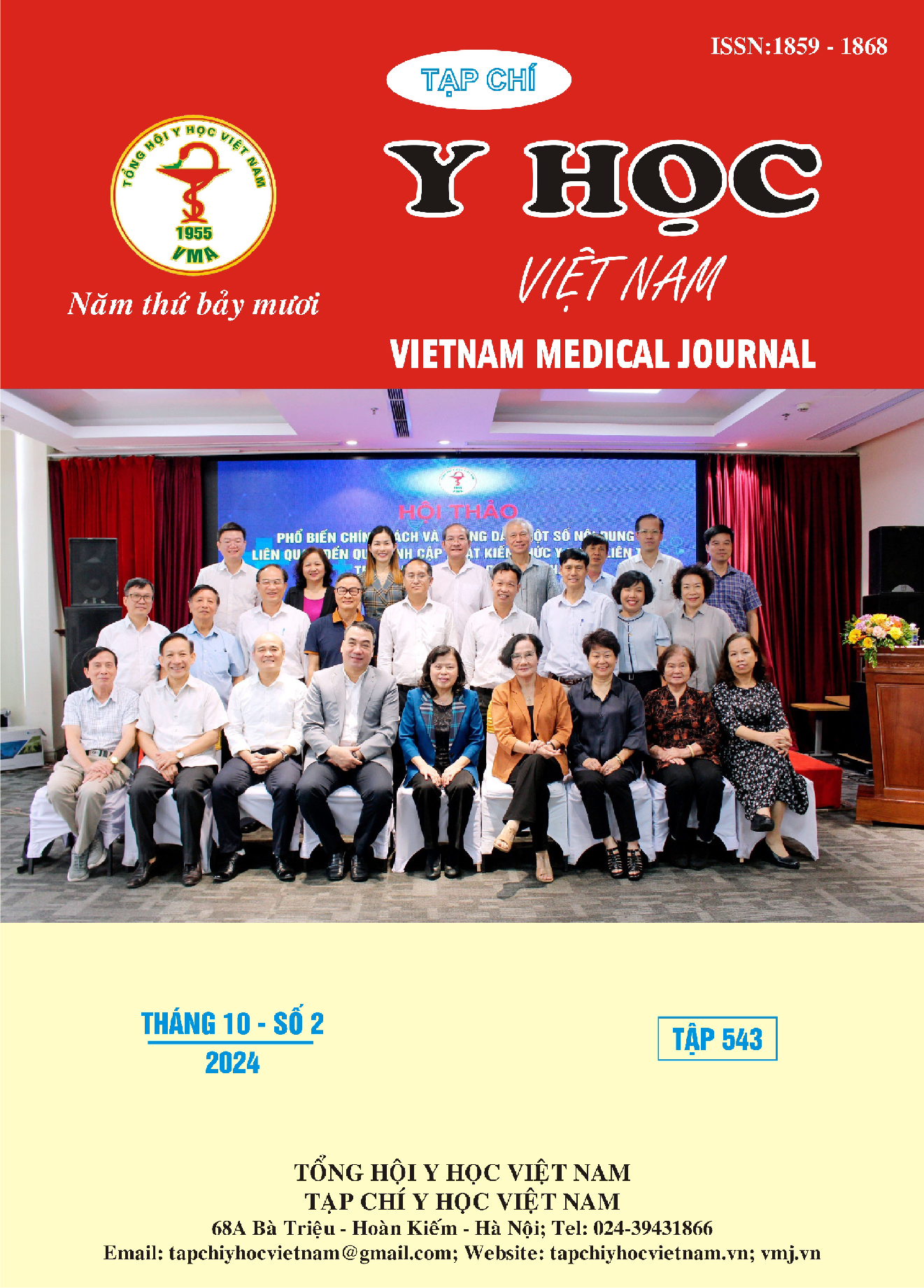SZABO T-STENTING TECHNIQUE IN INTERVENTION OF CORONARY ARTERY BIFURCATION LESIONS: A CLINICAL CASE REPORT
Main Article Content
Abstract
Background: Percutaneous coronary intervention (PCI) for complex bifurcation lesions requiring the use of two stents remains a challenge for interventional cardiologists due to the low success rate and suboptimal outcomes. Current two-stent intervention techniques have limitations, such as multiple layers of stent overlap at the bifurcation site or incomplete coverage of the side branch ostium due to incorrect placement. We describe an improved stenting technique based on the T-stenting method – the Szabo T-stenting technique – which combines T-stenting with the Szabo technique to accurately place the side branch stent at the entrance of the side branch, ensuring complete coverage of the side branch ostium while minimizing stent overlap at the carina and the main vessel. Case report: We present two clinical cases involving two male patients, aged 70 and 71. Both patients had bifurcation lesions in the left main coronary artery and were treated with the Szabo T-stenting technique for the deployment of two coronary stents. The technical success was achieved without any major cardiovascular events during the 30-day follow-up period. Conclusion: PCI for bifurcation lesions remains challenging, and an optimal two-stent technique requires a balance between full lesion coverage and minimal stent overlap at the carina and main vessel. The Szabo T-stenting technique appears to be a feasible and safe two-stent strategy for complex coronary artery bifurcation lesions
Article Details
Keywords
Coronary bifurcation lesions, two-stent technique, Szabo technique.
References
2. Cho S, Kang TS, Kim JS, et al. Long-Term Clinical Outcomes and Optimal Stent Strategy in Left Main Coronary Bifurcation Stenting. JACC Cardiovasc Interv. 2018;11(13):1247-1258.
3. Dou K, Zhang D, Xu B, et al. An angiographic tool for risk prediction of side branch occlusion in coronary bifurcation intervention: the RESOLVE score system (Risk prEdiction of Side branch OccLusion in coronary bifurcation interVEntion). JACC Cardiovasc Interv. 2015;39-46.
4. Szabo S, Abramowitz B, Vaitkus PT. New technique for aortoostial stent placement. Am J Cardiol. 2005;96:212H.
5. Song YB, Park TK, Hahn JY, et al. Optimal Strategy for Provisional Side Branch Intervention in Coronary Bifurcation Lesions: 3-Year Outcomes of the SMART-STRATEGY Randomized Trial. JACC Cardiovasc Interv. 2016;9(6):517-26.
6. Behan MW, Holm NR, de Belder AJ, et al. Coronary bifurcation lesions treated with simple or complex stenting: 5-year survival from patient-level pooled analysis of the Nordic Bifurcation Study and the British Bifurcation Coronary Study. Eur Heart J. 2016;37:1923–1928.
7. Colombo A, Stankovic G, Orlic D, et al. Modified T-stenting technique with crushing for bifurcation lesions: immediate results and 30-day outcome. Catheter Cardiovasc Interv. 2003;60:145–51.
8. Gutiérrez-Chico JL, Villanueva-Benito I, Villanueva-Montoto L, et al. Szabo technique versus conventional angiographic placement in bifurcations 010-001 of Medina and in aorto-ostial stenting: angiographic and procedural results. EuroIntervention. 2010;5:801–8.
9. Wong P. Two years experience of a simple technique of precise ostial coronary stenting. Catheter Cardiovasc Interv. 2008;72:331–4.
10. Lý Ích Trung, Nguyễn Tuấn Anh, Lê Nguyễn Quỳnh Thư, Bùi Lê Duẩn, Trương Thị Minh. Can thiệp sang thương lỗ mạch vành qua da bằng kỹ thuật Szabo. Tạp chí Y học TP Hồ Chí Minh. 2018;22(5):54.


